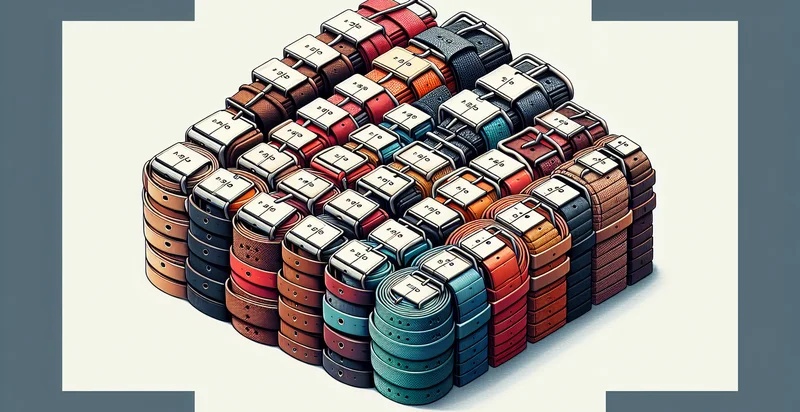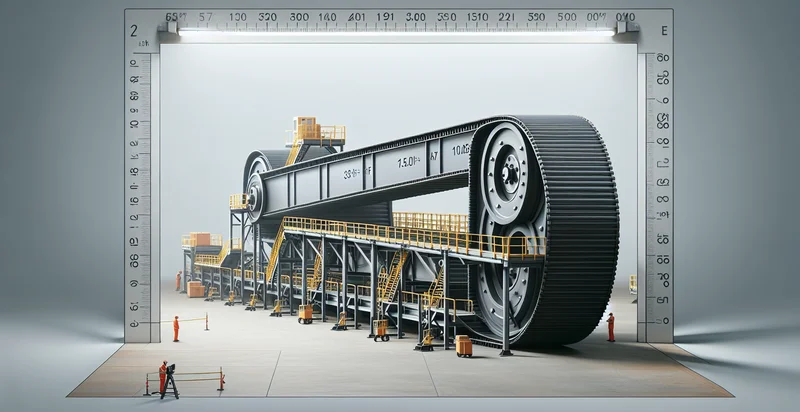Identify length of belt in inches
using AI
Below is a free classifier to identify length of belt in inches. Just upload your image, and our AI will predict the length of the belt in inches - in just seconds.

Contact us for API access
Or, use Nyckel to build highly-accurate custom classifiers in just minutes. No PhD required.
Get started
import nyckel
credentials = nyckel.Credentials("YOUR_CLIENT_ID", "YOUR_CLIENT_SECRET")
nyckel.invoke("length-of-belt-in-inches", "your_image_url", credentials)
fetch('https://www.nyckel.com/v1/functions/length-of-belt-in-inches/invoke', {
method: 'POST',
headers: {
'Authorization': 'Bearer ' + 'YOUR_BEARER_TOKEN',
'Content-Type': 'application/json',
},
body: JSON.stringify(
{"data": "your_image_url"}
)
})
.then(response => response.json())
.then(data => console.log(data));
curl -X POST \
-H "Content-Type: application/json" \
-H "Authorization: Bearer YOUR_BEARER_TOKEN" \
-d '{"data": "your_image_url"}' \
https://www.nyckel.com/v1/functions/length-of-belt-in-inches/invoke
How this classifier works
To start, upload your image. Our AI tool will then predict the length of the belt in inches.
This pretrained image model uses a Nyckel-created dataset and has 19 labels, including 1-3 Inches, 10-12 Inches, 13-15 Inches, 16-18 Inches, 19-21 Inches, 22-24 Inches, 25-27 Inches, 28-30 Inches, 31-33 Inches and 34-36 Inches.
We'll also show a confidence score (the higher the number, the more confident the AI model is around the length of the belt in inches).
Whether you're just curious or building length of belt in inches detection into your application, we hope our classifier proves helpful.
Related Classifiers
Need to identify length of belt in inches at scale?
Get API or Zapier access to this classifier for free. It's perfect for:
- Inventory Management: This function can be utilized in factories or warehouses to automatically classify belts based on their length. By streamlining the identification process, businesses can maintain accurate stock levels and facilitate quicker retrieval by ensuring the right size is always accessible.
- Quality Control: In manufacturing settings, the function can help ensure that only belts of specified lengths pass through quality checks. By quickly identifying discrepancies in belt lengths, businesses can reduce errors in production and ensure compliance with customer specifications.
- E-commerce Product Listings: Online retailers can use this classification function to automatically categorize products based on belt length. This would enhance user experience by allowing customers to filter searches more effectively, leading to improved sales conversion rates.
- Supplier Management: Companies can apply the function to assess supplier deliveries against standard belt lengths. By automatically verifying lengths, businesses can maintain quality relationships with suppliers and minimize discrepancies in orders.
- Customization Services: Businesses offering custom belt services can leverage this function to validate and record customer specifications accurately. This ensures that produced belts meet the precise requirements, enhancing customer satisfaction.
- Retail Checkout Systems: Retail environments can use this classification to streamline the checkout process for belt items. By integrating this function with POS systems, employees can quickly verify the length during checkout, reducing wait times for customers.
- Data Analytics: Businesses can use the function to compile data on belt lengths sold and produced. This information can be analyzed for trends, helping to forecast demand and optimize production strategies accordingly.


